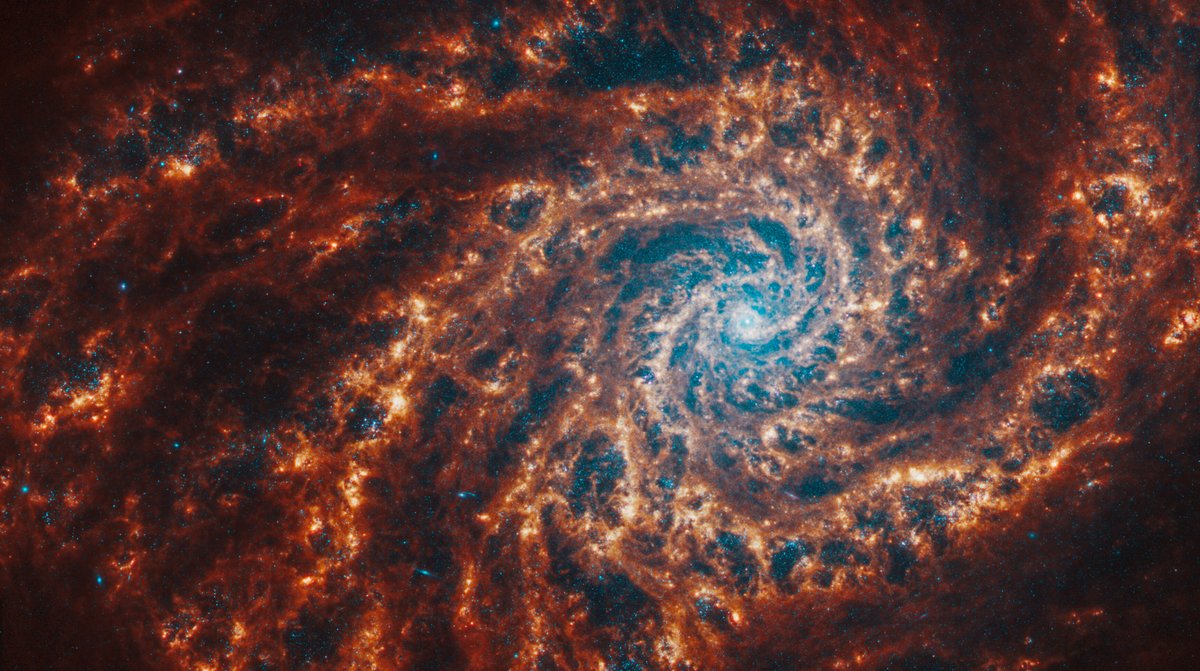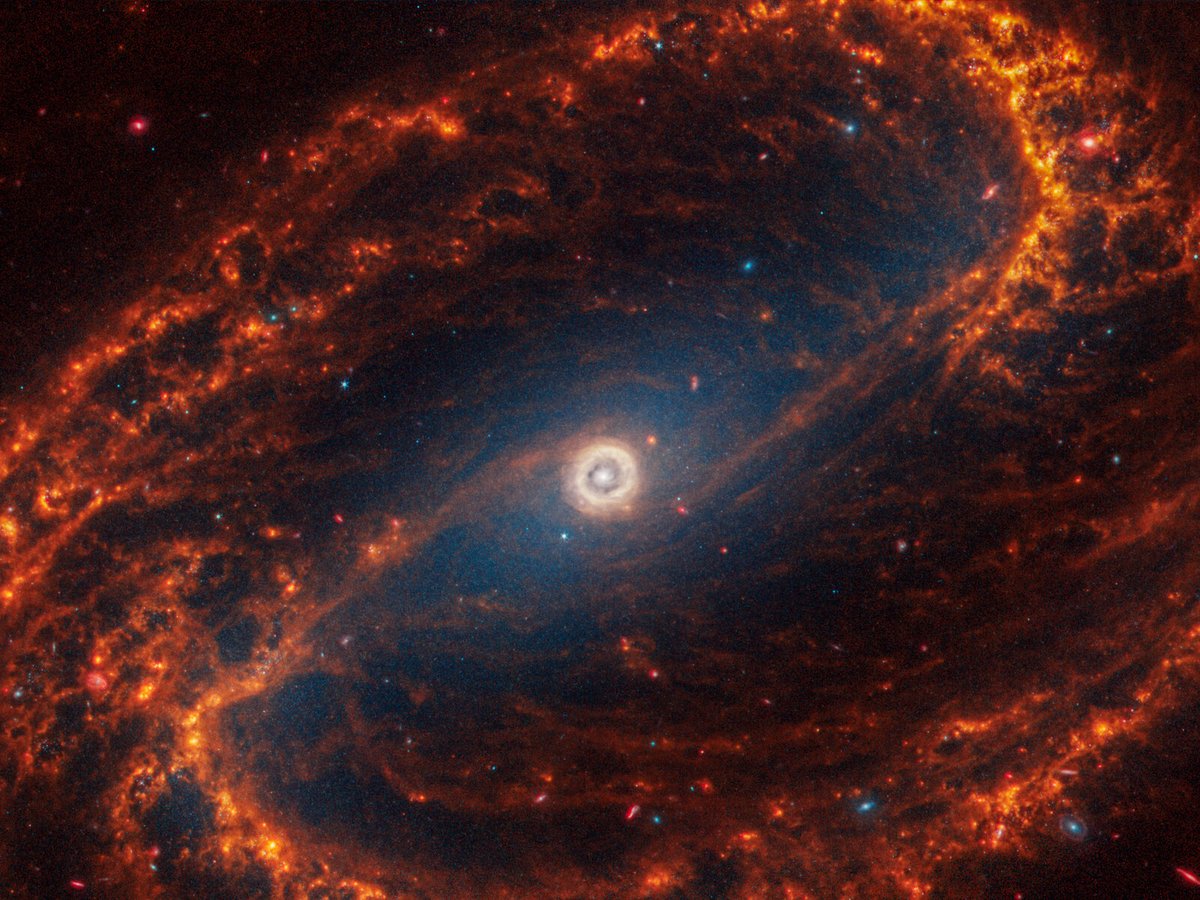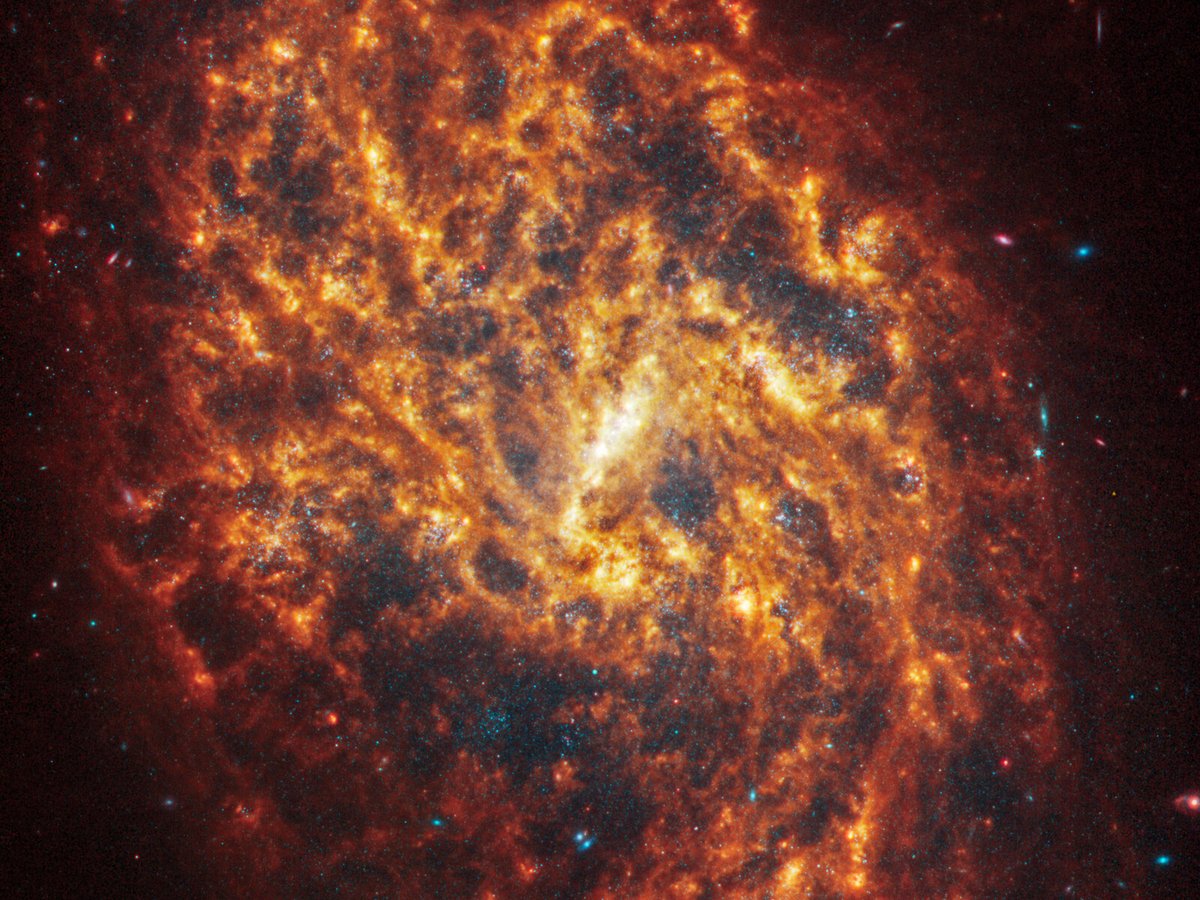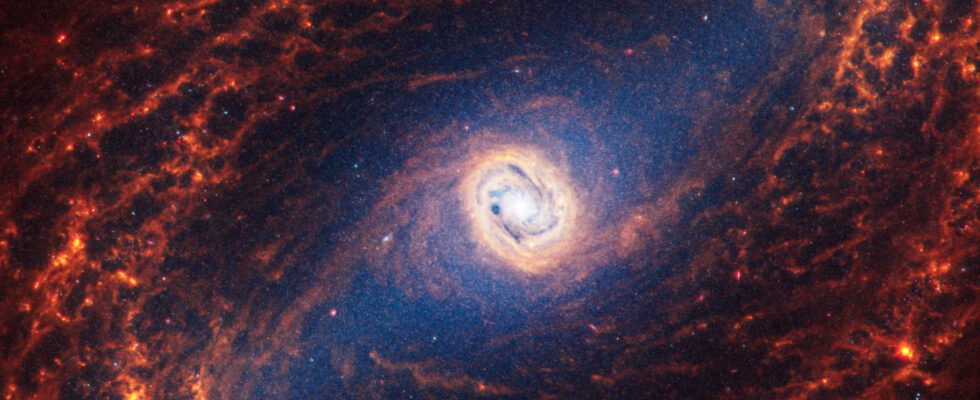THE space telescope and its 18 mirrors were recently able to observe a set of nearby galaxies to better understand their structure. As part of the PHANGS project, these infrared photos have captivated astrophysicists, not only because they are beautiful, but they are obviously treasures of information!
The PHANGS project is a long-term initiative, which mobilizes more than 150 astronomers and astrophysicists around the world. The objective is to better understand the structure of nearby galaxies, by examining them with as many instruments as possible. Thus, these are known objects in our sky, and others have already photographed them, such as Hubble, but also radio telescopes and other ground observatories such as the VLT. The series of JWST observations was released on January 29.
The structure of galaxies in detail
But the contribution of the James Webb sensors, in the near (NIRCam) and deep (MIRI) infrared, is major. Their combined images of 19 spiral-shaped galaxies revealed much-awaited details about their structure. Notably, most show infrared peaks consistent with the presence of supermassive black holes at their centers.

Thanks in particular to the James Webb photographs, PHANGS project scientists have published a catalog of more than 10,000 star clusters in these galaxies. In spiral galaxies, the oldest star formations are often near the center (blue), while large gas clouds combine and later recombine to form younger stars (seen in red), in structures that astrophysicists are trying to understand. There are “bubbles” of gas, and empty areas or areas with much lower density… “ The number of analyzes that can be carried out from this data is far greater than what our teams can produce “, explains Erik Rosolowsky, professor at the University of Edmonton in Canada, who led the publication. He expects other researchers will want to mine it over time, so the data is open.


To your wallpapers!
As for us, we still have to walk around and choose our wallpapers from these images of galaxies, which are as useful for research as for our wonder.


Researcher Thomas Williams, from the University of Oxford, aptly describes “our team is constantly overwhelmed (in a good way) by the number of new details in these images”. So, let’s walk, in the arcs with millions of stars, in these bridges of densified gases, in these clusters of nascent suns…
Source : Science NASA, Esa

10